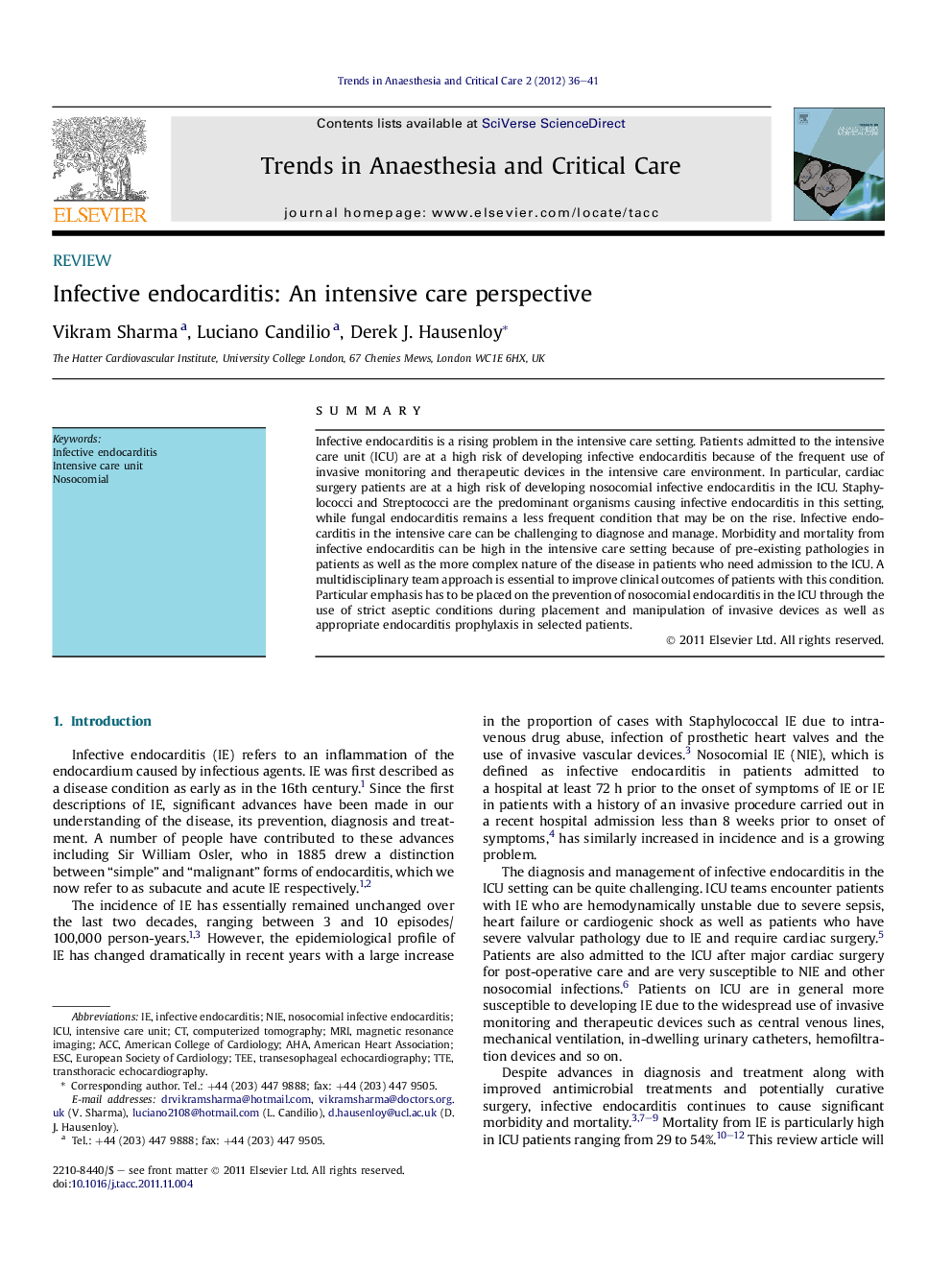| Article ID | Journal | Published Year | Pages | File Type |
|---|---|---|---|---|
| 2772706 | Trends in Anaesthesia and Critical Care | 2012 | 6 Pages |
SummaryInfective endocarditis is a rising problem in the intensive care setting. Patients admitted to the intensive care unit (ICU) are at a high risk of developing infective endocarditis because of the frequent use of invasive monitoring and therapeutic devices in the intensive care environment. In particular, cardiac surgery patients are at a high risk of developing nosocomial infective endocarditis in the ICU. Staphylococci and Streptococci are the predominant organisms causing infective endocarditis in this setting, while fungal endocarditis remains a less frequent condition that may be on the rise. Infective endocarditis in the intensive care can be challenging to diagnose and manage. Morbidity and mortality from infective endocarditis can be high in the intensive care setting because of pre-existing pathologies in patients as well as the more complex nature of the disease in patients who need admission to the ICU. A multidisciplinary team approach is essential to improve clinical outcomes of patients with this condition. Particular emphasis has to be placed on the prevention of nosocomial endocarditis in the ICU through the use of strict aseptic conditions during placement and manipulation of invasive devices as well as appropriate endocarditis prophylaxis in selected patients.
